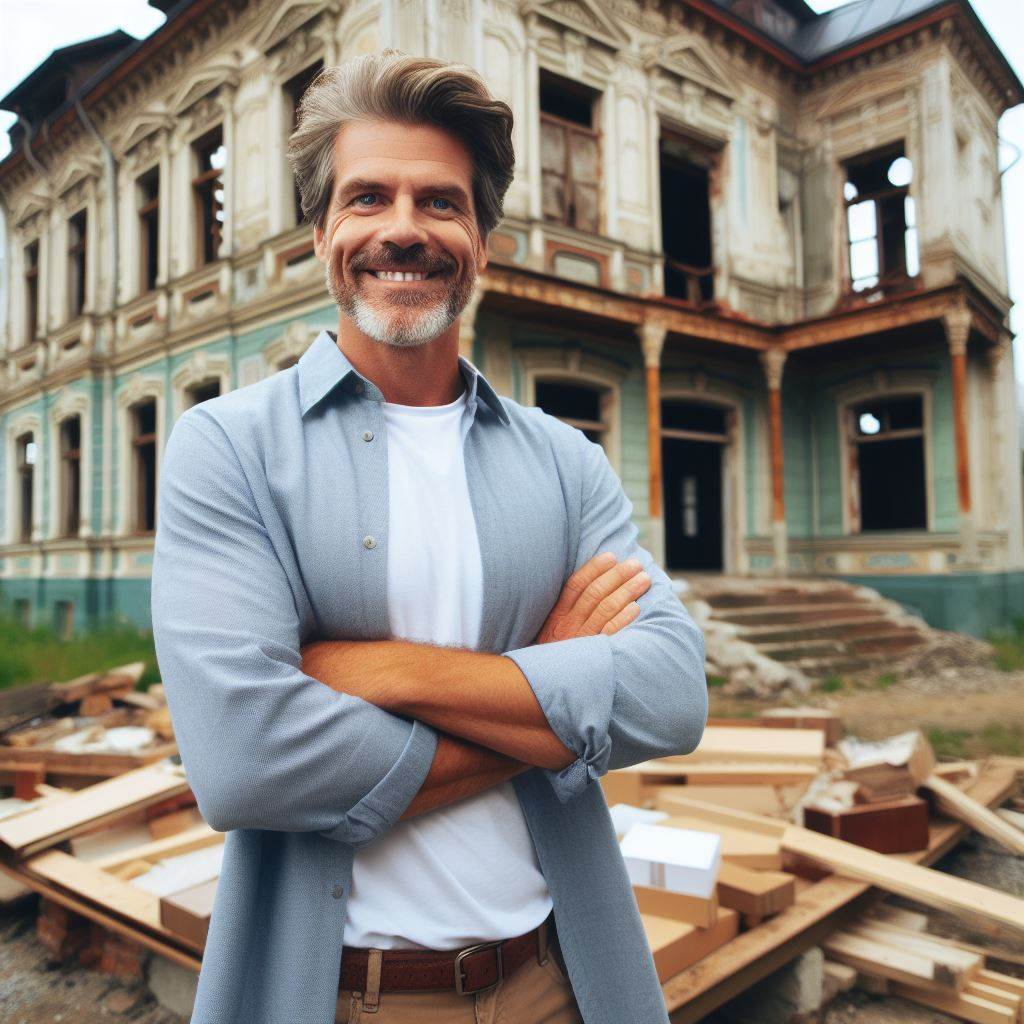Introduction
The conversion of factories into flats has emerged as a prominent trend in the real estate industry.
As urban spaces become more congested, the need for innovative solutions to housing problems has become crucial.
Repurposing old industrial buildings for residential use has proven to be an effective way to address this issue.
One of the key advantages of converting factories into flats is the utilization of unused or underutilized spaces.
Many old factories are located in prime urban areas, making them ideal for residential development.
By repurposing these buildings, developers can make use of existing infrastructure and preserve the architectural heritage of the area.
Additionally, transforming factories into residential buildings promotes sustainability.
It reduces the need for new construction, minimizing the environmental impact.
Moreover, these conversions often incorporate eco-friendly features such as energy-efficient systems and green spaces, further enhancing their appeal.
However, this real estate transformation also presents potential challenges.
The cost of renovating old factories can be substantial, requiring significant investment.
Ensuring compliance with building codes and regulations can also be complex due to the unique nature of these structures.
Moreover, converting factories into flats can lead to gentrification and the displacement of local communities.
Efforts should be made to mitigate these social impacts and ensure affordable housing options are available.
In fact, the growing trend of repurposing old industrial buildings for residential use offers advantages such as efficient use of space and sustainability.
Transform Your Real Estate Decisions
Unlock personalized real estate insights crafted just for you. Get actionable advice designed to amplify your success.
Get StartedHowever, challenges relating to cost, regulations, and social impact need to be carefully considered.
The transformation from factory to flats holds great potential in meeting the evolving needs of urban dwellers while preserving the historical fabric of our cities.
Historical Background
History of Factory Buildings in the US
The roots of factory buildings in the United States can be traced back to the Industrial Revolution in the late 18th century.
As technological advancements revolutionized manufacturing processes, large, purpose-built structures emerged to house the booming industries.
Iconic factories, such as the textile mills of Lowell, Massachusetts, and the Ford Motor Company’s assembly lines, symbolized the nation’s shift towards industrialization.
These structures embodied progress, innovation, and economic growth.
The decline of the manufacturing industry and its impact on factory buildings
However, as the 20th century unfolded, the landscape of American industry underwent a seismic shift.
Globalization, outsourcing, and automation led to the decline of traditional manufacturing, leaving behind vast, empty factory buildings.
Once humming with the sounds of production, these structures became abandoned relics, haunting reminders of a bygone era.
The decline had ripple effects, impacting not only the economic vitality of communities but also leaving a physical imprint on the urban fabric.
The need to find new uses for these vacant structures
Amidst the echoes of silent machinery, a pressing need arose to repurpose these vacant factory buildings.
Cities faced the challenge of revitalizing neighborhoods and creating sustainable urban environments.
Enterprising developers and visionary architects began reimagining these industrial relics as residential spaces.
The conversion of factories into stylish loft apartments and modern flats became a symbol of adaptive reuse, preserving the historical character of the buildings while meeting the demands of contemporary living.
Showcase Your Real Estate Business
Publish your company profile on our blog for just $200. Gain instant exposure and connect with a dedicated audience of real estate professionals and enthusiasts.
Publish Your ProfileThis transformation not only breathed new life into neglected structures but also contributed to the preservation of cultural heritage.
The repurposing of factory buildings as residential spaces became a win-win scenario, fostering community development and preserving the architectural legacy of a bygone industrial era.
From factory to flats, these structures tell a story of resilience and innovation, reminding us that history can be a foundation for future success.
The journey from manufacturing powerhouse to a thriving real estate market underscores the adaptability and creative potential within our ever-evolving urban landscapes.
Read: Smart Tech for Sustainable Property Management
The Appeal of Factory Conversions
Unique Characteristics and Charm of Repurposed Factories
- In the ever-evolving landscape of real estate, factory conversions have emerged as a distinctive and sought-after trend.
- The allure lies in the unique characteristics and inherent charm of repurposed factories.
- Unlike traditional residential buildings, these structures boast an industrial aesthetic that marries the rugged with the refined.
- The exposed brick walls, large windows, and remnants of machinery tell stories of a bygone industrial era, infusing each space with a captivating narrative.
Architectural Features that Make Factory Conversions Desirable
- What sets factory conversions apart is the marriage of historical authenticity with modern functionality.
- The architectural features of these spaces are a testament to this harmonious blend.
- Original factory windows, often oversized and strategically placed, flood the interiors with natural light, creating a sense of openness.
- Exposed beams and steel structures add a touch of industrial elegance, while repurposed materials contribute to an eco-friendly ethos.
- The adaptability of these spaces allows for innovative design concepts, creating homes that are both distinctive and comfortable.
Spacious Layouts and High Ceilings
One of the most significant draws of factory flats is the expansive living space they offer.
The open floor plans, a departure from the conventional segmented layouts, provide residents with a canvas for personalization.
High ceilings amplify the sense of grandeur, creating an airy atmosphere that is both luxurious and liberating.
This spaciousness not only caters to contemporary design preferences but also accommodates a variety of lifestyles, making factory conversions versatile residences that appeal to a broad spectrum of homeowners.
In the dynamic realm of real estate, the transition from factory to flats is not merely a shift in function but a transformation that encapsulates history, innovation, and a distinct architectural charm.
These conversions are more than homes; they are living canvases that seamlessly blend the old and the new, offering a unique and captivating real estate win.
Read: Warehouse Turned Arts Hub: A Tale
Advantages of Factory Conversions
The Economic Benefits of Converting Factories into Flats
- Transforming old factories into modern residential spaces is not just a creative architectural endeavor; it’s a strategic move that reaps significant economic benefits.
- The conversion process injects life into once-abandoned industrial spaces, creating jobs and stimulating local economies.
- Factories, once dormant, become vibrant hubs for construction, attracting skilled labor and contributing to the growth of the construction industry.
- Moreover, the conversion process often requires specialized skills, leading to the emergence of a niche job market.
- Architects, engineers, and construction workers specializing in adaptive reuse find new opportunities.
- This not only fuels economic growth but also fosters a culture of expertise in repurposing structures, which is vital in our era of sustainable development.
The Positive Impact on Property Values and Local Communities
- The shift from factory to flats often results in an upswing in property values.
- The unique charm and character of repurposed industrial spaces, coupled with the scarcity of such properties, make them desirable among homebuyers.
- As a result, nearby properties also experience a positive impact on their values, creating a ripple effect that elevates the entire neighborhood.
- Furthermore, the infusion of residential spaces into former industrial areas breathes new life into local communities.
- Residents bring their livelihoods, commerce, and a sense of community.
- This infusion of diverse activities transforms once desolate zones into thriving neighborhoods, fostering a sense of pride among locals and attracting even more investment.
The Contribution to Sustainable Development and Revitalization Efforts
Factory conversions align seamlessly with sustainable development goals.
Rather than constructing new buildings and contributing to urban sprawl, repurposing existing structures minimizes the environmental impact.
This adaptive reuse not only preserves the embodied energy of the original building but also reduces the need for raw materials, contributing to a more sustainable future.
In terms of revitalization, the transformation of factories into flats breathes new life into neglected urban areas. It creates vibrant, mixed-use spaces where people can live, work, and play.
This dual-purpose functionality not only utilizes space efficiently but also adds to the overall livability of the community, creating a model for sustainable urban development.
Read: LA’s Commercial Real Estate Growth in 2024

Challenges and Considerations
Potential Challenges in Adapting Factories for Residential Use
The transition from factories to flats brings forth a set of challenges that demand careful consideration.
Factories, designed for industrial productivity, often lack the inherent qualities needed for comfortable living.
The initial challenge lies in transforming vast, open spaces into cozy, functional homes.
The absence of predefined rooms and the sheer scale of these structures necessitate creative spatial planning.
Furthermore, adapting factories to residential use requires addressing environmental concerns.
Factories may have left behind traces of pollutants, demanding rigorous cleanup efforts to ensure a healthy living environment.
Noise pollution, another residue of industrial life, must also be mitigated to meet the tranquility expectations of residential dwellings.
The Complexities of Converting Industrial Spaces to Meet Building Codes
Converting industrial spaces into residential units involves navigating the intricate web of building codes.
Industrial structures may not align with residential safety standards, posing a complex challenge for developers.
Heightened fire safety measures, accessibility standards, and adequate natural lighting become imperative considerations in the conversion process.
Preserving the industrial aesthetic while adhering to building codes adds another layer of complexity.
Striking the right balance between retaining the authenticity of the factory and meeting contemporary living standards requires a delicate touch.
Showcase Your Real Estate Business
Publish your company profile on our blog for just $200. Gain instant exposure and connect with a dedicated audience of real estate professionals and enthusiasts.
Publish Your ProfileThis delicate dance between history and modernity demands a nuanced approach, often involving collaboration between architects, historians, and regulatory bodies.
The Importance of Preserving Historical Elements While Ensuring Safety and Liveability
Preserving the historical essence of factories is not just a nostalgic endeavor; it’s an essential aspect of urban development.
Historical elements, such as exposed brick walls, steel beams, and original flooring, contribute to the unique character of the converted spaces.
However, preserving these elements must not compromise safety or liveability.
Innovative architectural solutions, such as integrating historical features into the overall design and repurposing old machinery as artistic installations, allow for a harmonious coexistence of the past and present.
This delicate balance ensures that the converted spaces retain their industrial charm while providing the comfort and safety required for modern residential living.
In essence, the journey from factory to flats is a transformative process laden with challenges and considerations.
Addressing these challenges thoughtfully ensures the successful adaptation of industrial spaces into vibrant residential communities, celebrating the past while embracing the future.
Read: Eco-Friendly Office Spaces: A Case Study
Success Stories and Examples
Revolutionizing Urban Spaces: The Factory-to-Flats Triumph
As the real estate landscape evolves, factory conversion projects have emerged as a beacon of innovation, breathing new life into urban spaces.
The success stories of these projects underscore the transformative power of repurposing industrial relics into vibrant residential havens.
One notable example is the iconic Domino Sugar Factory in Brooklyn, New York.
Once an industrial giant, the site has been artfully reimagined into a mixed-use development.
Luxurious apartments now rise where conveyor belts once hummed, creating a seamless blend of historic charm and contemporary living.
This ambitious project not only preserved an industrial landmark but also catalyzed a surge in demand for homes in the area.
Economic Resurgence and Improved Communities
The ripple effects of factory-to-flats conversions extend far beyond aesthetics.
Take the case of Manchester’s Royal Mills, a former cotton mill turned into modern apartments.
The revival of this historic structure not only bolstered the local economy but also triggered a domino effect of positive change.
Crime rates dwindled, local businesses thrived, and a palpable sense of community flourished.
The success of Royal Mills serves as a testament to the potential of such projects to uplift entire neighborhoods.
From Grim to Glam: Vibrant Living Spaces
The heart of factory conversion triumphs lies in the transformation of once-grim industrial landscapes into vibrant, livable spaces.
The repurposing of Chicago’s Fulton Market Cold Storage Building stands as a shining example.
The cavernous structure now houses chic loft-style apartments, with exposed brick and steel beams paying homage to its industrial past.
The melding of history with modernity has created an enticing living experience, attracting a diverse mix of residents and breathing vitality into the surrounding community.
In a nutshell, factory-to-flats conversions epitomize the convergence of innovation and preservation.
These success stories not only celebrate architectural ingenuity but also showcase the positive impact on local economies and communities.
As the trend continues to gain momentum, it is evident that the journey from factory to flats is a winning proposition for both real estate developers and urban dwellers alike.
Future Trends in Factory Conversions
As we stand on the cusp of a new era in real estate, the transformation of industrial spaces into residential havens is gaining unprecedented momentum.
The trend of converting factories into flats is not just a passing fancy; it’s a dynamic shift that promises continued growth and innovation.
The potential for continued growth in factory conversions
The prospects for the conversion of factories into residential spaces seem limitless.
Showcase Your Real Estate Business
Publish your company profile on our blog for just $200. Gain instant exposure and connect with a dedicated audience of real estate professionals and enthusiasts.
Publish Your ProfileWith an increasing scarcity of land in urban areas, repurposing existing industrial structures provides a sustainable solution
The adaptive reuse of factories allows for the preservation of historical and architectural significance while meeting the rising demand for housing.
As cities grapple with limited space, the vertical integration of converted factories into living spaces is not only a viable solution but an exciting one.
Possible future demand for unique living spaces
The demand for unique living spaces is on the rise, and factory conversions perfectly cater to this growing desire for distinctive homes.
Former industrial buildings offer a canvas for creativity and individuality, providing residents with homes that tell stories of the past while embracing the modern comforts of the present.
The charm of exposed brick, soaring ceilings, and expansive windows creates a living experience unlike any other.
The potential for transforming factories into bespoke residences aligns seamlessly with the evolving preferences of homebuyers seeking more than just four walls.
The importance of adaptive reuse in urban development and sustainability efforts
In the face of environmental challenges, adaptive reuse stands as a beacon of sustainable urban development.
Transforming factories into flats minimizes the environmental impact associated with new construction while breathing new life into neglected structures.
This practice promotes a circular economy, reduces waste, and fosters a sense of community within existing urban landscapes.
As we navigate the future, the significance of adaptive reuse cannot be overstated – it’s a pivotal component of responsible urban development and a testament to our commitment to a greener, more sustainable future.
Therefore, the journey from factory to flat is not just a trend; it’s a transformative wave that reshapes the landscape of real estate.
The potential for growth, coupled with the increasing demand for unique living spaces and the sustainability benefits of adaptive reuse, propels factory conversions into the forefront of real estate innovation.
The future is bright, and it’s intricately woven into the fabric of these repurposed industrial marvels.
Conclusion
Converting factories into flats offers numerous benefits and advantages.
Firstly, it allows for the preservation of historical industrial architecture while providing unique living spaces for individuals or families.
Secondly, these conversions often result in affordable housing options, addressing the growing demand for accessible homes in urban areas.
Additionally, repurposing old industrial buildings is a sustainable practice, promoting environmental conservation and reducing urban sprawl.
Moreover, factory conversions stimulate economic growth by creating jobs in construction, maintenance, and property management.
It revitalizes communities, injecting new life into once-abandoned areas.
Lastly, factory conversions enhance the real estate market by diversifying housing options and increasing the availability of desirable homes in sought-after locations.
The repurposing of old industrial buildings has a significant positive impact on both communities and the real estate market.
By transforming these structures into residential units, communities experience social and economic rejuvenation.
The presence of former factories turned into flats brings new residents, enhancing the population and creating a vibrant neighborhood.
Furthermore, the redevelopment of industrial areas breathes new life into the region, attracting businesses, retail establishments, and cultural amenities.
This transformation leads to an overall increase in property values, making it a mutually beneficial endeavor for homeowners, real estate developers, and local governments.
In the end, converting factories into flats is a viable option that benefits individuals, communities, and the real estate market.
The advantages of preserving historical architecture, providing affordable housing, promoting sustainability, and stimulating economic growth cannot be overlooked.
With the growing demand for diverse housing options, factory conversions offer an exciting opportunity.
It is crucial for readers to consider this alternative when exploring solutions to the current housing shortage.
Showcase Your Real Estate Business
Publish your company profile on our blog for just $200. Gain instant exposure and connect with a dedicated audience of real estate professionals and enthusiasts.
Publish Your ProfileBy embracing the repurposing of old industrial buildings, we can create vibrant, inclusive communities and meet the evolving needs of the housing market.




